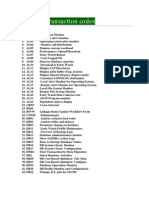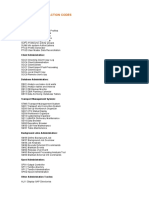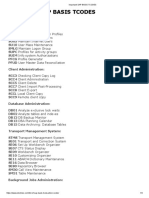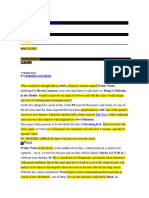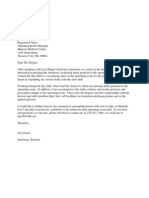0% found this document useful (0 votes)
23 views4 pagesSAP OpenText SOP Recreated
The document outlines various methods for making changes in SAP, including configuration via SPRO, enhancements through BADI, and ABAP development using SE38/SE80. It also discusses data management strategies such as data archiving with SARA, table buffering via SE11, and system monitoring with ST03N, along with recovery options for archived and deleted data. Best practices for data retention and management are emphasized to prevent permanent data loss.
Uploaded by
Md MaazCopyright
© © All Rights Reserved
We take content rights seriously. If you suspect this is your content, claim it here.
Available Formats
Download as DOCX, PDF, TXT or read online on Scribd
0% found this document useful (0 votes)
23 views4 pagesSAP OpenText SOP Recreated
The document outlines various methods for making changes in SAP, including configuration via SPRO, enhancements through BADI, and ABAP development using SE38/SE80. It also discusses data management strategies such as data archiving with SARA, table buffering via SE11, and system monitoring with ST03N, along with recovery options for archived and deleted data. Best practices for data retention and management are emphasized to prevent permanent data loss.
Uploaded by
Md MaazCopyright
© © All Rights Reserved
We take content rights seriously. If you suspect this is your content, claim it here.
Available Formats
Download as DOCX, PDF, TXT or read online on Scribd
/ 4






